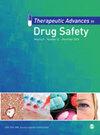Neurodevelopmental outcomes in children exposed prenatally to levetiracetam
IF 3.4
3区 医学
Q2 PHARMACOLOGY & PHARMACY
引用次数: 1
Abstract
Some old antiseizure medications (ASMs) pose teratogenic risks, including major congenital malformations and neurodevelopmental delay. Therefore, the use of new ASMs in pregnancy is increasing, particularly lamotrigine and levetiracetam. This is likely due to evidence of low risk of anatomical teratogenicity for both lamotrigine and levetiracetam. Regarding neurodevelopmental effects, lamotrigine is the most frequently investigated new ASM with information available for children up to 14 years of age. However, fewer data are available for the effects of levetiracetam on cognitive and behavioral development, with smaller cohorts and shorter follow-up. The aim of the present review was to explicate neurodevelopmental outcomes in children exposed prenatally to levetiracetam to support clinical decision-making. The available data do not indicate an increased risk of abnormal neurodevelopmental outcomes in children exposed prenatally to levetiracetam. Findings demonstrated comparable outcomes for levetiracetam versus controls and favorable outcomes for levetiracetam versus valproate on global and specific cognitive abilities, and behavioral problems. In addition, the available evidence shows no significant dose-effect association for levetiracetam on neurodevelopmental outcomes. However, this evidence cannot be determined definitively due to the limited numbers of exposures with relatively short follow-up. Therefore, further research is required. Plain Language Summary Antiseizure medications (ASMs) are medicines that inhibit the occurrence of seizures. Levetiracetam is a new ASM. Some old ASMs are linked with an increased risk of physical birth abnormalities and adverse effects on the child’s brain development. Therefore, the use of new ASMs in pregnancy is increasing, especially lamotrigine and levetiracetam. This is likely due to evidence of low risk of birth abnormalities for both lamotrigine and levetiracetam. Regarding effects on development of the brain, lamotrigine is the most frequently examined new ASM with information available for children up to 14 years of age. However, fewer data are available for the effects of levetiracetam on cognitive and behavioral development. Also, levetiracetam studies were smaller and shorter compared with studies investigating lamotrigine effects. The aim of this article was to review the child’s brain development effects after exposure to levetiracetam during pregnancy. The available data do not suggest an increased risk of the child having learning or thinking difficulties. Findings demonstrated comparable outcomes for levetiracetam versus controls (i.e. children unexposed to levetiracetam), and favorable outcomes for levetiracetam versus valproate. In addition, the available evidence shows no link between the higher dose of levetiracetam and an increased risk of adverse effects on the child’s brain development. However, this evidence cannot be determined definitively due to the limited numbers of children exposed to levetiracetam with relatively short duration of follow-up. Therefore, further research is required.产前接触左乙拉西坦的儿童的神经发育结果
一些旧的抗癫痫药物(asm)具有致畸风险,包括严重的先天性畸形和神经发育迟缓。因此,妊娠期使用新型抗炎药的情况越来越多,尤其是拉莫三嗪和左乙拉西坦。这可能是由于有证据表明拉莫三嗪和左乙拉西坦的解剖致畸性风险较低。关于神经发育的影响,拉莫三嗪是最常被调查的新ASM,其信息可用于14岁以下的儿童。然而,关于左乙拉西坦对认知和行为发展的影响的数据较少,队列较小,随访时间较短。本综述的目的是阐明产前暴露于左乙拉西坦的儿童的神经发育结果,以支持临床决策。现有数据并未表明产前暴露于左乙拉西坦的儿童神经发育异常的风险增加。研究结果表明,左乙拉西坦与对照组的结果相当,左乙拉西坦与丙戊酸在整体和特定认知能力以及行为问题上的结果有利。此外,现有证据显示左乙拉西坦对神经发育结局没有显著的剂量效应关联。然而,由于暴露次数有限,随访时间相对较短,因此无法确定这一证据。因此,需要进一步的研究。抗癫痫药物(asm)是抑制癫痫发作的药物。左乙拉西坦是一种新型ASM。一些老年性肌痉挛与身体出生异常的风险增加以及对儿童大脑发育的不利影响有关。因此,妊娠期使用新型抗炎药物越来越多,尤其是拉莫三嗪和左乙拉西坦。这可能是由于有证据表明拉莫三嗪和左乙拉西坦的出生异常风险较低。关于对大脑发育的影响,拉莫三嗪是最常被检查的新ASM,其信息可用于14岁以下儿童。然而,关于左乙拉西坦对认知和行为发展的影响的数据较少。此外,与调查拉莫三嗪作用的研究相比,左乙拉西坦的研究规模较小,时间较短。本文的目的是回顾在怀孕期间暴露于左乙拉西坦后对儿童大脑发育的影响。现有的数据并不表明儿童有学习或思维障碍的风险增加。研究结果表明,左乙拉西坦与对照组(即未暴露于左乙拉西坦的儿童)的结果相当,左乙拉西坦与丙戊酸盐的结果有利。此外,现有证据表明,高剂量的左乙拉西坦与儿童大脑发育不良风险增加之间没有联系。然而,由于接触左乙拉西坦的儿童数量有限,随访时间相对较短,因此无法确定这一证据。因此,需要进一步的研究。
本文章由计算机程序翻译,如有差异,请以英文原文为准。
求助全文
约1分钟内获得全文
求助全文
来源期刊

Therapeutic Advances in Drug Safety
Medicine-Pharmacology (medical)
CiteScore
6.70
自引率
4.50%
发文量
31
审稿时长
9 weeks
期刊介绍:
Therapeutic Advances in Drug Safety delivers the highest quality peer-reviewed articles, reviews, and scholarly comment on pioneering efforts and innovative studies pertaining to the safe use of drugs in patients.
The journal has a strong clinical and pharmacological focus and is aimed at clinicians and researchers in drug safety, providing a forum in print and online for publishing the highest quality articles in this area. The editors welcome articles of current interest on research across all areas of drug safety, including therapeutic drug monitoring, pharmacoepidemiology, adverse drug reactions, drug interactions, pharmacokinetics, pharmacovigilance, medication/prescribing errors, risk management, ethics and regulation.
 求助内容:
求助内容: 应助结果提醒方式:
应助结果提醒方式:


